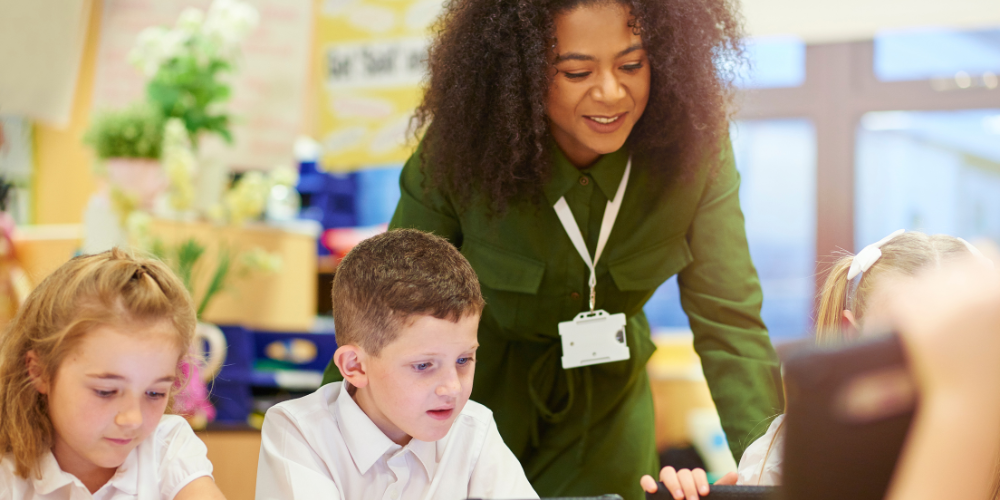
9th September 2022
Behaviour Management Strategies for Teachers
When a teacher begins their training, their focus is usually on sharing their passion and imparting their knowledge to students. Behaviour management might not come to mind first when considering teaching as a career. And if it does, there might be some concern: how do you deal with disruptive behaviour when you have a class of 30 students to teach?
Why is behaviour management important within classrooms?
Behaviour management is important in the classroom because it contributes to creating an environment which is conducive to learning. If behaviour is not managed, students will not receive the education that they deserve. Behaviour management helps to teach students about being respectful to one another and everyone stands to benefit from this. Effective behaviour management will ensure that students’ behaviour does not disrupt lessons, so that the teachers can teach and the students can learn.
Reinforce positive behaviour
Praise feels good. Reinforcing positive behaviour encourages students to behave well as they receive a confidence boost and ultimately want to please you. If they’ve received praise for something, they’ll continue to try hard so that the praise continues. For example, when a student completes their weekly reading log at home, and their teacher awards them a merit. The student then has an incentive to continue to keep up the reading log.
Examples of how to give a student positive attention include:
- Asking the student about their weekend activities
- Providing words of encouragement while the student is working
- Assigning helpful tasks and responsibilities to the student. For example, taking the register to the school office
- Making eye contact and smiling
- Asking the student’s opinion when in a group discussion
- Ignoring any minor disruptive behaviours by not providing the student with any attention when they occur
Establish clear expectations
Establishing clear and consistent expectations is important for all students, but especially for younger years, who need a solid foundation to start their educational journeys. Setting expectations will ensure that students know and understand what is needed from them. This engages them and allows them to feel part of a community.
What’s more, numerous studies have found that setting clear expectations in the classroom can improve students’ motivation and learning outcomes. If you establish clear expectations, students are more likely to meet them. By using the word ‘we’ when you share expectations, you help to establish a community — you will be achieving these together.
- We respect ourselves, our teacher and others
- We are polite and say please and thank you
- We put in our best effort at all times
- We keep our classroom neat and tidy
- We follow directions and instructions
- We listen and pay attention
- We get involved and ask questions
- We take responsibility for our actions
Build positive relationships
It’s important as a teacher to build positive relationships with your students, ensuring that the students feel seen and heard. This is harder to do in a school with a large number of students — but vitally important — otherwise the quieter students could be easily overlooked.
If you form positive relationships with your students, they will respect you, seeing you as more than someone who is detached at the front of the classroom, simply instructing them. They will also be less likely to misbehave and more likely to be engaged in your lesson.
It can be as simple as greeting students individually or referencing something you know they’re interested in. As the relationship grows, they’ll want to impress you. Not only will this be academically rewarding for you and your students, but it’ll also promote a sense of belonging and wellbeing in your classroom.
Stay confident
By adopting a confident attitude and stance, you’ll show your students that you’re in control and are competent. It’s helpful to think about your body language, aiming to come across as approachable and supportive, but also firm. Warm, open body language can also help you to build positive relationships with your students.
There are a number of way in which you can do this:
- Move around the classroom, making sure that each student gets some of your attention
- Smile and add enthusiasm to you voice and movements
- Avoid intimidating facial expressions, such as too much eye contact
- Avoid weak posture as it can make you seem disinterested or lacking in confidence
- Avoid crossing your arms as this can make you look unapproachable
Even as a qualified teacher, it helps to have a professional confidence boost. Continuous Professional Development (CPD) can help with this, as long as you find a reputable course that will have a positive impact on your wellbeing.
Recommended for you
Top 5 questions to ask at the end of a teacher interview
An interview for a teaching role can often be a daunting prospect...
- Your Career
- •
- 6 Min Read
Celebrating St. Patrick’s Day In The Classroom
Dia Duit! The 17th of March is St. Patrick's Day in the...
- Your Career
- •
- 6 Min Read
Ways to support your students during Ramadan
What is Ramadan? Ramadan, the ninth month of the Islamic calendar has...
- Your Career
- •
- 6 Min Read


